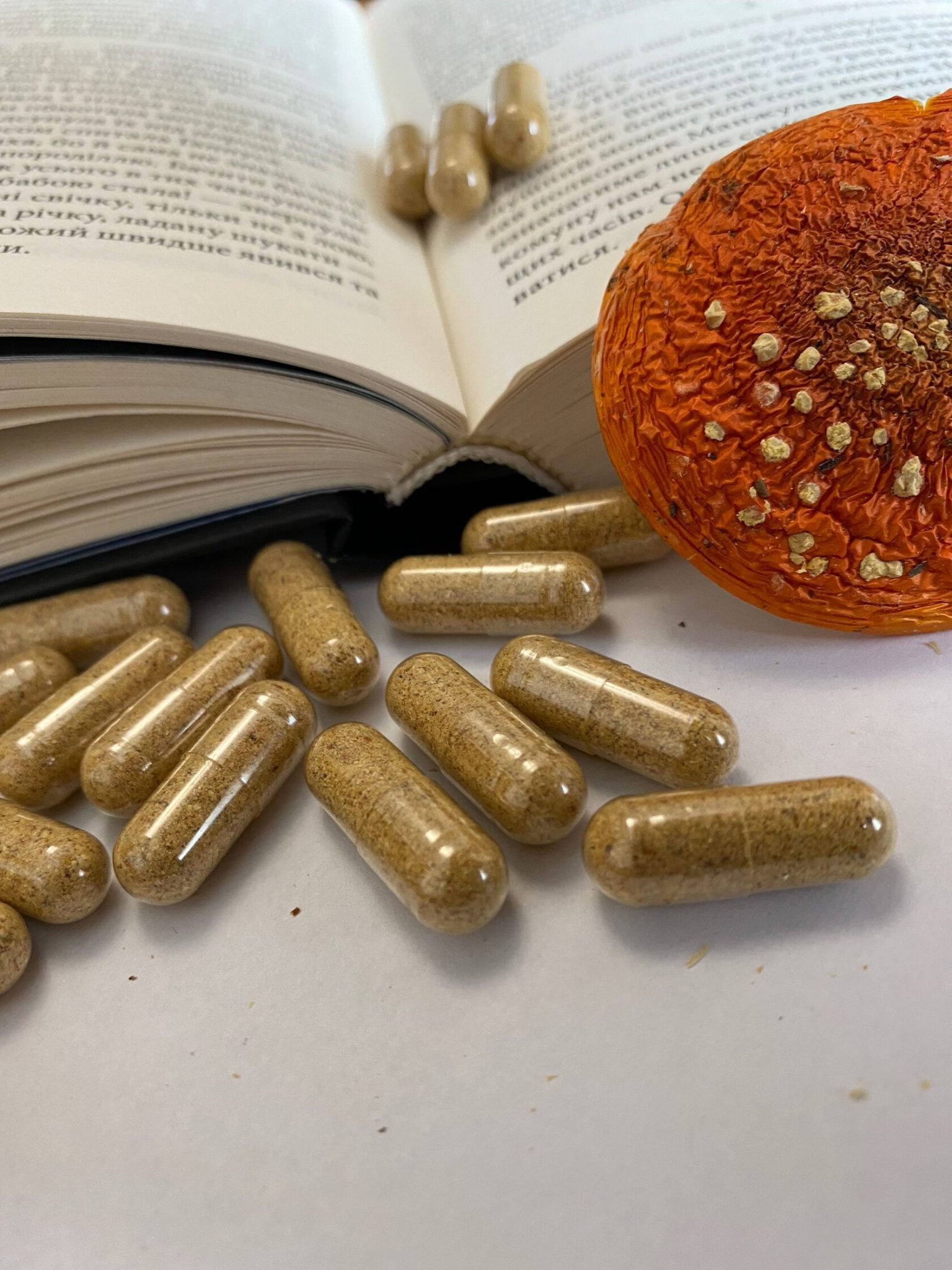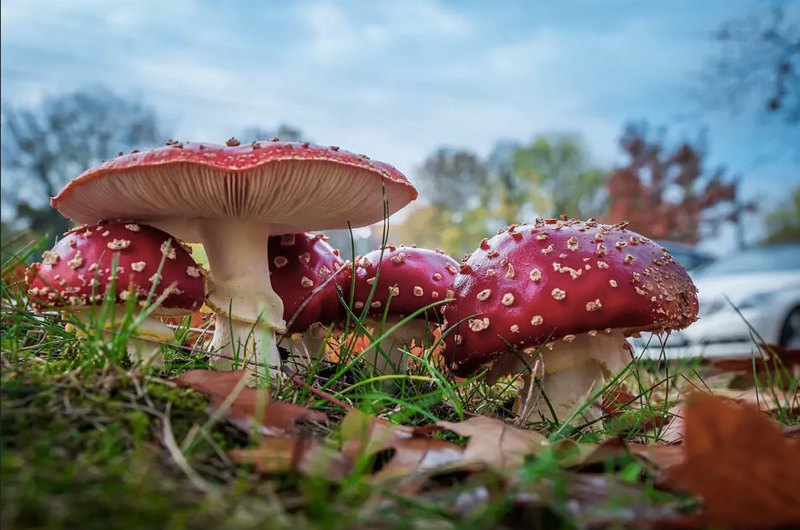
Microdosing and prohibition
The concept of “microdosing” emerged in the middle of the last century during research into various psychedelic substances: LSD, MDMA (ecstasy), psilocybin, and muscimol, which is found in fly agaric.
Scientists and enthusiasts attempted to take such substances in small doses ‒ but regularly. However, in the early 1970s, these substances were completely banned and recognised as narcotics. Other countries joined the total ban, so research ceased for years.
In Ukraine, LSD, MDMA, and psilocybin are still illegal, meaning there is no way to research them. However, this ban did not affect fly agarics. So they are… No, they are not in the legal field. They seem to be nowhere to be found ‒ but they are everywhere.
Ukraine has the Ukrainian Psychedelic Research Association (UPRA) ‒ an organisation that works in collaboration with the Ministry of Health to promote the clinical use of psychedelic substances, in particular, fly agarics. This association includes doctors, psychologists, and scientists. They state that they are eager to help people suffering from PTSD, depression, and other psychological conditions by using psychedelics as a psychotherapeutic tool.
What fly agaric can do
Artem Lapatanov, co-founder of UPRA and a psychologist by training, has immersed himself in the study of microdosing with fly agaric. He examines research findings from scientists in various countries, conducts integration and therapy groups where each participant microdoses in parallel, and is writing his master’s thesis on the subject. However, contrary to Russian propaganda, microdosing is not so straightforward.

“I shall start scientifically,” Artem says with concentration. “The main alkaloids of the red amanita muscaria are muscimol and ibotenic acid. They are molecular analogues of the principal neurotransmitters in our nervous system: GABA and glutamate. These are responsible for the reactive and inhibitory systems, respectively. In my view, fly agaric acts as a modulator of these systems, leading to the stabilisation of the nervous system. Therefore, in theory, microdosing with fly agaric can reduce anxiety, balance the emotional state, and improve sleep and circadian rhythms overall. A derivative of this process is an increase in energy levels. I have heard confirmation of these assumptions from people who have practised microdosing. However, this is only one side of the coin.”
Microdosing is a meeting with your demons
If microdosing with fly agaric had only a positive effect on a person’s mental and physical state, you would not be reading this article. Artem continues: “Psychedelics, which include red fly agaric, have no direct pharmacological effects. When you take evidence-based medicine, you know exactly how it will act. This is not the case with fly agarics. For example, there is a person in a state of prolonged stress ‒ just like you and me. Due to an excess of difficult experiences, their emotions are encapsulated and can be displaced. The person begins to use fly agaric ‒ it stabilises the psyche ‒ and then a resource appears to release the blocked and unlived. It turns out that you are waiting for a pharmacological ‘promise’ of passive healing: take ‘A’ and you are guaranteed to get ‘B’… and this does not happen. You take ‘A’ and you get contact with yourself.”
According to Artem, during microdosing, people often cry a great deal, feel fear, and experience anxiety. Without understanding the mechanism he describes, one might think that these mushrooms do not work or have the opposite effect. For some people, these “side effects” become a reason to stop using them: “Often it is simply hard to understand: what is happening to me? Why do I feel this way?” A psychotherapist can assist with this. In my opinion, microdosing is a psychotherapy tool that provides greater depth ‒ the ability to work with the subconscious. It is a meeting with your demons. The question is whether a person will do something about it. Not everyone who purchases fly agaric is prepared for this.

We will pause here to state that there is currently no scientific consensus or large-scale studies that confirm the benefits of fly agaric in such therapy. There is no hard evidence that fly agaric is safe and effective. This remains a subject of scientific debate and a matter for further research.
Psychotherapy with fly agaric
For several years, Artem has nurtured the idea of therapeutic groups in which all participants would use fly agaric and share their experiences while working with psychotherapists.
A few months ago, the first group was launched, and recruitment for the second group is now under way. “We worked for one month, meeting once a week. Among us were doctors, military personnel, psychotherapists, IT specialists, and engineers ‒ adults, each of whom came with their own request. All of them were united by an interest in microdosing: how it could help and how best to use it.” He notes that some participants have reported improvements.
You can be sold a mushroom of any quality
The market for mushrooms intended for microdosing is currently large. Artem counted 16 varieties available for sale. In addition to the red fly agaric, there are also shell mushrooms, comb mushrooms, rainbow mushrooms, chaga mushrooms, and cordyceps. Yet this entire range is neither inspected nor regulated by any authority.
Put simply, you could be sold a mushroom grown anywhere under unknown conditions. “There are many shops. Often, it is artisanal production, where a single person might pick the mushrooms, dry them, grind them, and pack them into capsules. They are sold as dietary supplements. These are not medicines and therefore are not certified. Some manufacturers do care about the quality of their products and send a sample from each batch to a laboratory to be tested for heavy metals. You can request a certificate ‒ but the seller might only do this once and continue collecting mushrooms ‘somewhere near Chornobyl’.”
Harvard Medical School warns that it is very easy to be poisoned by the wrong type of mushroom, as many species in nature look alike, but some can severely damage the liver, causing grave illness or even death.

Thus, when buying such products, you take a risk. But what about the toxicity of fly agarics themselves? Why have we been warned against them for so many years? “The amanita group of mushrooms we are discussing is quite broad. When knowledge was limited, people could easily lump together the fly agaric ‒ amanita muscaria ‒ and the pale toadstool ‒ amanita phalloides. The latter is truly deadly toxic, the most toxic mushroom in the world. Fly agarics also contain muscarine, a poison. However, to die from muscarine poisoning due to fly agaric, one would need to consume about a hundred kilograms of these mushrooms at once.”
In order for microdosing to be recognised as an evidence-based treatment, extensive research and the establishment of clinical protocols are necessary, says psychotherapist and psychiatrist Roman Panyushkin. “The number of clients who have come to me for therapy after beginning microdosing has increased. Traumatic events from their past and childhood have begun to resurface. They realise they cannot cope with what has come to light on their own. Microdosing is not a magic pill that will solve all your problems.”








